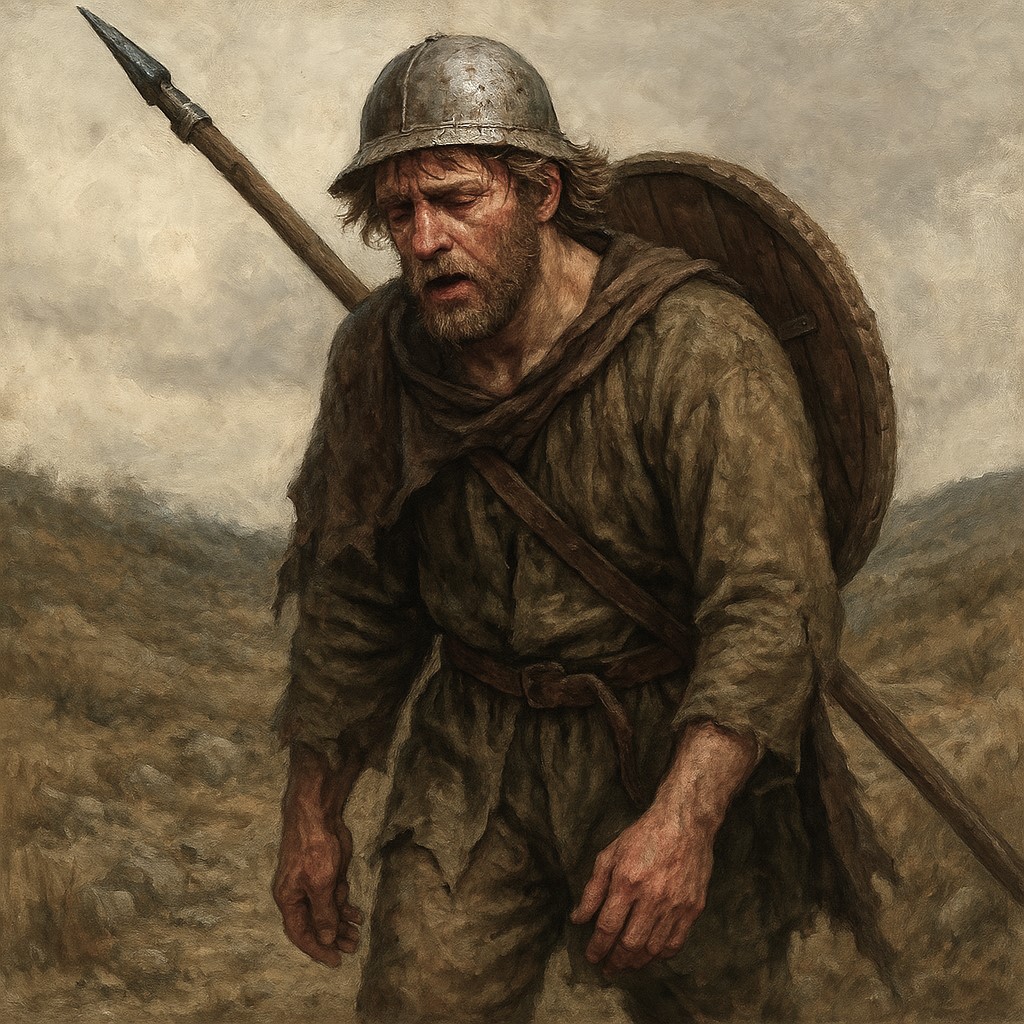Forced March
Forced marches occur when a group of soldiers, travellers or adventurers are pushed to travel farther or faster than the distance that may normally be covered in the space of a day, depending on the terrain. This often occurs for reasons of urgency, where time is scarce and threats are imminent. A forced march usually exceeds the group's comfortable daily limits, causing exhaustion, reduced combat readiness or physical strain. In game terms, it typically means extra distance at the cost of fatigue, requiring a constitution check and the need to rest afterward to restore penalties or avoid injuries.
Contents
The system outlines the mechanics for making exhaustion checks, which are used to determine how long a character can remain physically active before becoming unable to continue. Each character's threshold for exhaustion is based on their constitution, which determines how much sustained activity they can endure before fatigue overtakes them. The Forced March Limits table indicates the point at which a humanoid character must begin making checks to avoid exhaustion.
Each successful constitution check allows the character to continue functioning for an additional hour of activity; with regards to combat, the check is made to learn if the character's able to remain combat effective for another five rounds. Further checks are made following the additional hour or combat rounds; should a check fail, the character is spent — their physical reserves exhausted. At that point, the character must rest, being unable to act otherwise, regardless of the activity. Such persons should be treated as helpless defenders.
When making a constitution check to resist exhaustion, a result that exactly matches the character's constitution score is not wholly considered a success. Instead, the strain imposed by the effort triggers a secondary effect, requiring the character to roll upon the malady checks table. This reflects the potential for sudden illness, strain or breakdown when the body is pushed to the very edge of its tolerance.
Table Notes
| Constitution | Hours of Activity without a Check | combat rounds/day | |||
|---|---|---|---|---|---|
| travel | hard labour | light labour | mental labour | ||
| 3 | 3 | 1 | 1 | 6 | 7 |
| 4 | 4 | 1 | 2 | 8 | 15 |
| 5 | 6 | 2 | 3 | 9 | 25 |
| 6 | 9 | 3 | 5 | 10 | 35 |
| 7 | 10 | 5 | 8 | 10 | 45 |
| 8 | 10 | 8 | 10 | 10 | 60 |
| 9 | 10 | 10 | 10 | 10 | 75 |
| 10 | 10 | 10 | 10 | 10 | 90 |
| 11 | 10 | 10 | 10 | 10 | 110 |
| 12 | 10 | 10 | 10 | 10 | 130 |
| 13 | 10 | 10 | 10 | 10 | 150 |
| 14 | 10 | 10 | 10 | 10 | 175 |
| 15 | 10 | 10 | 10 | 11 | 200 |
| 16 | 11 | 10 | 10 | 11 | 225 |
| 17 | 11 | 10 | 11 | 12 | 260 |
| 18+ | 12 | 11 | 12 | 13 | 300 |
Travel describes the sustained movement on foot in which the character engages, regardless of terrain. This does not include horseback riding — see below. Since the table measures time, not distance, the number of hours is the same whether or not the individual is moving along a road or through the brush (see movement pace). Travellers carried along in carts, wagons and carriages are considered to be resting.
Hard labour describes any form of physical exertion that consistently taxes the body, strains the muscles and causes the character to perspire. It encompasses activities that demand effort beyond casual or routine motion, often sustained over long periods. Examples include the manual lifting, hauling or dragging of heavy loads; the use of tools such as axes, picks, hammers or shovels; and the operation of cranks, pulleys or other mechanisms that require steady application of force.
Carrying a weight that reduces the character's movement by 2 or more action points (see Encumbrance) qualifies as hard labour, as the burden directly limits the character's capacity for mobility and recovery. Low-constitution characters should adjust their loads accordingly when not actually engaged in dungeoneering or advancing towards a fight, since daily movement under such a load should apply this column, not travel. Hard labour also includes the act of hitching and unhitching horses or managing large animals. The classification excludes momentary effort, such as lifting a crate or climbing a short wall, focusing instead on prolonged strain that contributes to cumulative fatigue.
Light labour describes activity that requires steady effort but does not strain the muscles or cause perspiration. It includes actions that involve posture, balance or coordination rather than strength, and can be maintained for long periods without significant fatigue. Carrying a load that reduces movement by 1 action point (see encumbrance) qualifies as light labour, as does controlling a mount while riding. It may also cover repetitive or low-impact tasks such as sorting, helping to push a cart over ruts periodically, foraging or sharpening tools, in case where these are sustained over time.
Mental labour describes sustained cognitive effort performed without physical exertion, typically requiring only focus, concentration and simple tools such as a writing implement. This includes activities like composing text, making calculations, translating languages, studying texts or memorising material. Learning spells qualifies as mental labour, as it demands prolonged attention and internalisation, even though it involves little or no bodily movement. The fatigue associated with mental labour arises not from physical exhaustion, but from the mental discipline required to maintain extended focus.
See also,
Combat Strain
Dispel Exhaustion (spell)
Travel
